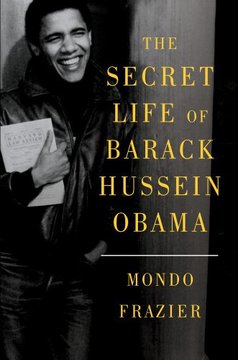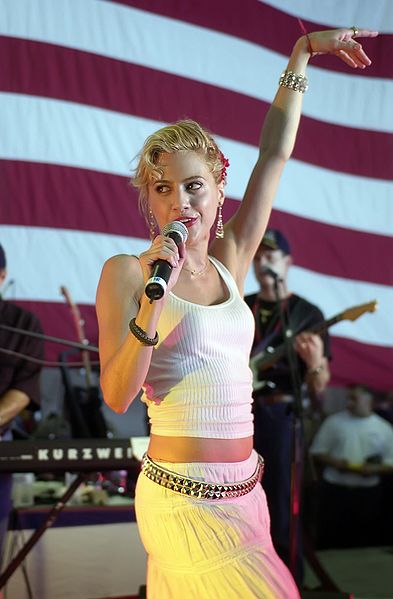
This is the story of an incredibly brave man.
A few days ago, an announcement was made concerning Master Sgt. Woodrow Wilson Keeble, the first full-blooded Sioux Indian to receive the Medal of Honor.
Keeble's story is inspiring and just something to remember the next time you hear the standard MSM line about U.S. servicemen: "We support the troops--but they are such a mess because of war. What victims!"
Nearly 60 years after his gallant actions in the Korean War--he risked his life to save his fellow soldiers--and 26 years after Keeble passed away, Keeble will receive the Medal of Honor posthumously in a ceremony on March 3.
Keeble is one of the most decorated Soldiers in North Dakota history. A veteran of World War II and the Korean War, he was born in 1917 in Waubay, S.D., on the Sisseton-Wahpeton Sioux Reservation, which extended into North Dakota. He spent most of his life in the Wahpeton, N.D. area, where he attended an Indian school. In 1942 Keeble joined the North Dakota National Guard, and in October that year, found himself embroiled in some of the fiercest hand-to-hand combat of World War II on Guadalcanal.
Keeble first rose to fame for his actions on Guadalcanal in World War II. He left the Pacific battle with a multitude of honors for his bravery.
"Guadalcanal seemed to be on his mind a lot," Russell Hawkins, Keeble's stepson, said. "His fellow Soldiers said he had to fight a lot of hand-to-hand fights with the Japanese, so he saw their faces. Every now and then he would get a far-away look in his eyes, and I knew he was thinking about those men and the things he had to do." At Henderson Field on the South Pacific Island, Keeble served with Company I, 164th Infantry - the first Army unit on Guadalcanal.
"I heard stories from James Fenelon, who served with him there, and he would talk about how the men of the 164th rallied around this full-blooded Sioux Indian whose accuracy with the Brown Automatic Rifle was unparalleled," Hawkins said. "It was said he would go in front of patrols and kill enemies before his unit would get there."
The Sioux have a word for that kind of bravery, according to Hawkins - wowaditaka. "It means don't be afraid of anything, be braver than that which scares you the most." Keeble personified the word according to fellow Soldiers, and earned the first of four Purple Hearts and his first Bronze Star for his actions on Guadalcanal.

When war broke out in Korea, Keeble was back in action. He served as a 34-year-old master sergeant with the 1st Platoon, Co. G, 19th Infantry Reg., 24th Division.
According to eyewitness accounts, while serving as the acting platoon leader of 1st Plt. in the vicinity of the Kumsong River, North Korea, on or about Oct. 15. 1951, Keeble voluntarily took on the responsibility of leading not only his platoon, but the 2nd and 3rd Platoons as well.
In an official statement 1st Sgt. Kosumo "Joe" Sagami of Co. G said, "All the officers of the company had received disabling wounds or were killed in action, except one platoon leader who assumed command of the company." The company's mission was to take control of a steep, rocky, heavily fortified hill.
Hawkins recalled how the man everyone knew as "Woody," described the terrain. "We were driving through Colorado on a trip, and Woody was pointing at something out the window," Hawkins said. By that time, Keeble had suffered seven debilitating strokes and lost the ability to speak.
"I pulled over and realized he was pointing at a large, rocky cliff with an almost sheer drop. I asked Woody if that was what it was like during that battle in Korea and he nodded, 'yes,'" Hawkins said. "It wasn't quite a straight drop down, but you could get up the hill faster on your hands and knees than on your feet."
Sagami wrote that Keeble led all three platoons in successive assaults upon the Chinese who held the hill throughout the day. All three charges were repulsed, and the company suffered heavy casualties. Trenches filled with enemy soldiers, and fortified by three pillboxes containing machine guns and additional men surrounded the hill.
Following the third assault and subsequent mortar and artillery support, the enemy sustained casualties among its ranks in the open trenches. The machine gunners in the pillboxes however, continued to direct fire on the company. Sagami said after Keeble withdrew the 3rd platoon, he decided to attempt a solo assault.
"He once told a relative that the fourth attempt he was either going to take them out or die trying," Hawkins said.
"Woody used to tell people he was more concerned about losing his men than about losing his own life," he added. "He pushed his own life to the limit. He wasn't willing to put his fellow Soldiers' lives on the line."
Armed with grenades and his Browning Automatic Rifle, Keeble crawled to an area 50 yards from the ridgeline, flanked the left pillbox and used grenades and rifle fire to eliminate it, according to Sagami. After returning to the point where 1st Platoon held the company's first line of defense, Keeble worked his way to the opposite side of the ridgeline and took out the right pillbox with grenades. "Then without hesitation, he lobbed a grenade into the back entrance of the middle pillbox and with additional rifle fire eliminated it," Sagami added.
Hawkins said one eyewitness told him the enemy directed its entire arsenal at Keeble during his assault. "He said there were so many grenades coming down on Woody, that it looked like a flock of blackbirds." Even under heavy enemy fire, Keeble was able to complete his objective. Only after he killed the machine gunners did Keeble order his men to advance and secure the hill.
"When I first started hearing these stories I was amazed that a man of Woody's size (more than six feet tall and 235-plus pounds), could sneak up on the enemy without being noticed," Hawkins said. "So one day, I was out helping him mow the lawn, and I asked him how he did it. He just shrugged his shoulders.
"I joked with him and told him those soldiers must have been blind or old or something, because he would never be able to sneak up on a young guy like me." Hawkins said he continued to mow then was startled when Woody popped up from behind some bushes near him. "He could have reached out and grabbed me by the ankles, and I didn't even know he was there!" Keeble had slid on his back behind the brush. Although Hawkins was not positive, he believed Keeble might have used a similar maneuver when attacking the pillboxes.
Keeble was wounded on at least five different occasions and 83 grenade fragments were removed from his body.
For more on Woodrow Wilson Keeble's exploits and life after the military, check out, Military.com's great story, "First Sioux awarded Medal of Honor".
His is an amazing story.
It also is a little bit of an antidote to all the media reports about how the men and women in the U.S. armed forces are victims.
Woodrow Wilson Keeble, a real American hero.
As RidesAPaleHorse stated: "It's a damn shame it took this country this long."
Now at last, he's getting the recognition of that he so richly deserves.
by Mondoreb
image/idea: RidesAPaleHorse
image: army
Source: First Sioux to Receive Medal of Honor
Death by 1000 Papercuts Front Page.































No comments:
Post a Comment
Leave your name/nic.
We've changed the comments section to allow non-registered users to comment.
We'll continue like that until it's being abused.
We reserve the right to delete all abusive or otherwise inappropriate comments.